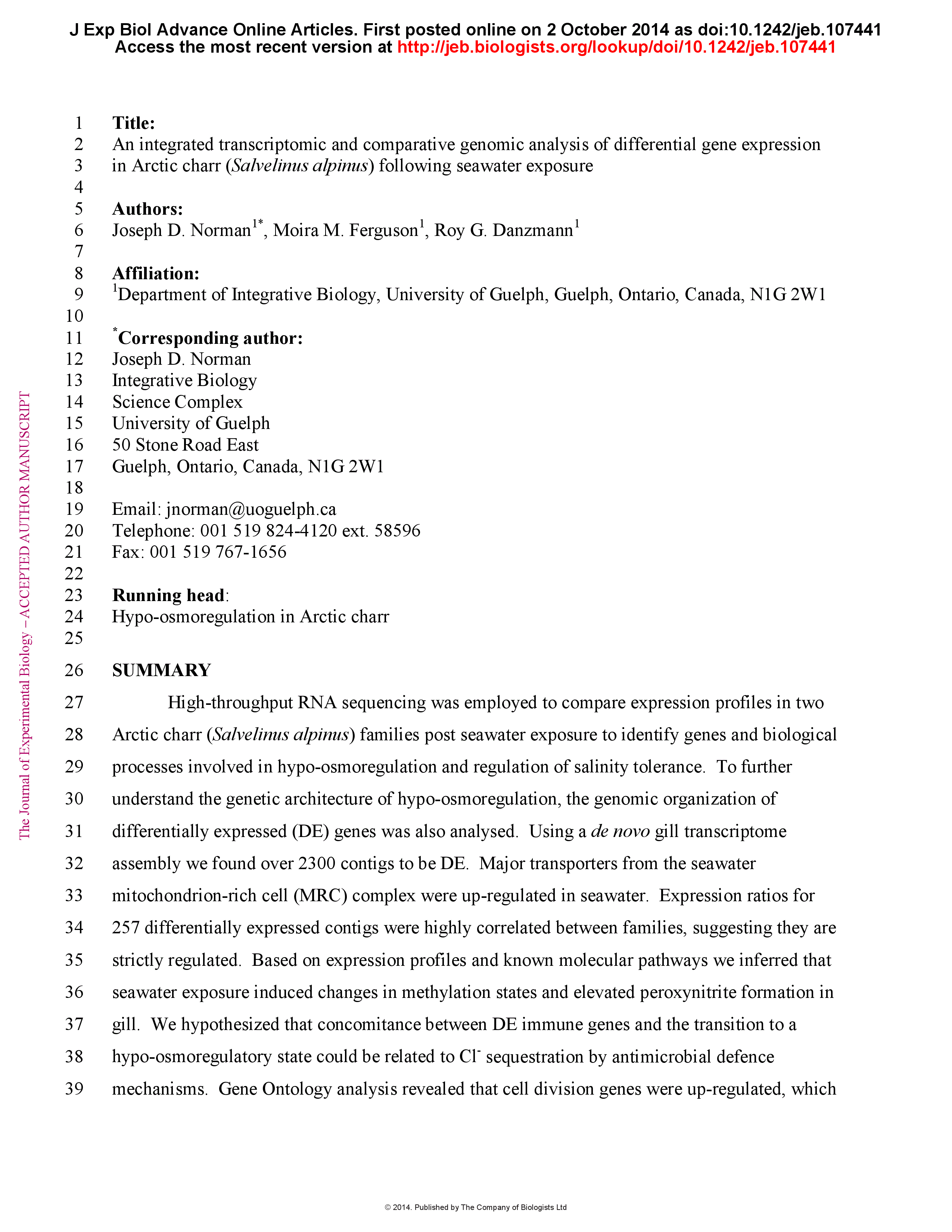Abstract
High-throughput RNA sequencing was employed to compare expression profiles in two Arctic charr (Salvelinus alpinus) families post seawater exposure to identify genes and biological processes involved in hypo-osmoregulation and regulation of salinity tolerance. To further understand the genetic architecture of hypo-osmoregulation, the genomic organization of differentially expressed (DE) genes was also analysed. Using a de novo gill transcriptome assembly we found over 2300 contigs to be DE. Major transporters from the seawater mitochondrion-rich cell (MRC) complex were up-regulated in seawater. Expression ratios for 257 differentially expressed contigs were highly correlated between families, suggesting they are strictly regulated. Based on expression profiles and known molecular pathways we inferred that seawater exposure induced changes in methylation states and elevated peroxynitrite formation in gill. We hypothesized that concomitance between DE immune genes and the transition to a hypo-osmoregulatory state could be related to Cl- sequestration by antimicrobial defence mechanisms. Gene Ontology analysis revealed that cell division genes were up-regulated, which could reflect the proliferation of ATP1α1b-type seawater MRCs. Comparative genomics analyses suggest that hypo-osmoregulation is influenced by the relative proximities among a contingent of genes on Arctic charr linkage groups AC-4 and AC-12 that exhibit homologous affinities with a region on stickleback chromosome Ga-I. This supports the hypothesis that relative gene location along a chromosome is a property of the genetic architecture of hypo-osmoregulation. Evidence of non-random structure between hypo-osmoregulation candidate genes was found on AC-1/11 and AC-28, suggesting that interchromosomal rearrangements played a role in the evolution of hypo-osmoregulation in Arctic charr.








